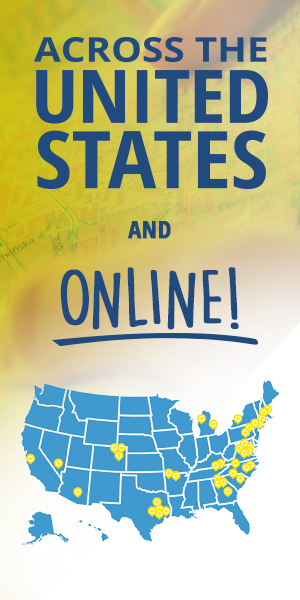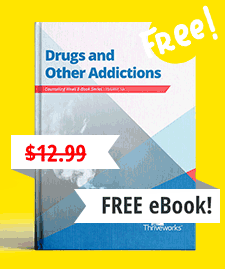
Think back to the very beginning: Just after meeting your partner and realizing that there might be something there. Did you light up every time they texted or called you? Without a doubt. Did you feel the butterflies in your stomach after your first kiss? Of course! Were you dying to spend every waking moment together? Absolutely.
Now, reflect on the current state of your relationship. Do you light up every time your partner texts or calls you? I wouldn’t say every time… Do you feel those butterflies in your stomach when you kiss? Sometimes. Are you constantly pining to spend more time together? Not exactly…
We know how it goes. The honeymoon phase of your relationship is full of excitement, love, passion, and anticipation. You can’t get enough of each other. But eventually, this phase comes to an end. You settle into the relationship and everything becomes, well, normal. We want to be clear: There is nothing wrong with this. It’s completely natural for relationships to enter and exit the honeymoon phase. However, when it comes to reviving a dull relationship, it might be worth revisiting the honeymoon phase.
How Long Is the Honeymoon Phase? Does It Have to End?
If you’re in a long-term relationship, you likely know the honeymoon phase well. As we began to explain earlier, the honeymoon phase describes the beginning of one’s relationship, when everything is new and exciting. The time you spend together here is meaningful; your intimacy and passion are at an all-time high. These intense feelings, which are characteristic of the honeymoon phase, can be explained by a few neurotransmitters:
- Dopamine: When we fall in love, dopamine activates the brain’s reward and pleasure centers. This leads to feelings of elation.
- Oxytocin: This neurotransmitter, “the love hormone,” is released when we hug, kiss, cuddle, or engage in other forms of physical touch.
- Serotonin: In the early phases of love and attraction, our serotonin activity is lesser. This triggers those consuming thoughts about the individual and the new relationship.
- Norepinephrine: Finally, there is an increase in norepinephrine in the honeymoon phase, which causes the body to release adrenaline, thus responsible for those butterflies.
Experts say that the honeymoon phase can last as long as 24 months—but often, it ends much sooner. Why? Our reward and pleasure centers aren’t so easily triggered after X amount of time. Physical touch lessens, and thus the release of oxytocin. Serotonin and norepinephrine activity levels out. In summary, these hormones return to normal and that intense yearning for each other subsides.
That said, we can take advantage of these neurotransmitters to return to those early feelings of fun, excitement, passion, and love. Therefore, no—the honeymoon phase doesn’t technically have to end!
4 Tips for Reviving Your Relationship Using What We Know About the Honeymoon Phase
We can tap into these hormones as well as other lessons learned in the early stages to revive our relationships. Let’s go on a journey and take a few pointers from our past selves, when we were just shameless lovebirds:
1. Get closer—physically.
When you were newly dating, you probably couldn’t keep your hands off each other. Today, you might not prioritize physical touch or realize what it can do for your relationship. As we explained earlier, oxytocin gets released during physical touch, which then causes you to feel happy and secure. Therefore, it’s important to prioritize physical touch in your relationship. Physical touch doesn’t have to mean sex; you can experience the release of oxytocin simply through holding hands, cuddling on the couch, giving (or receiving) a back massage, or kissing each other on the cheek.
2. Pay attention.
You used to notice each other. You wouldn’t be together today if you didn’t. You paid attention to her favorite foods and movies; you noticed the reddening of his face every time you gave him a compliment; you spotted her pet peeves; you observed his many hairstyles (and had a personal favorite). What do you notice today? Do you pay attention? If you don’t, it’s time to start. Make an effort. Try, “Hey honey, you haven’t worn your hair like that in years. It looks beautiful.” Or, “I can tell you’ve had a rough day. Is there anything I can do to help?”
3. Have intimate conversations.
It might feel like you know everything you could possibly know, but we bet that’s not the case. We have these deep discussions early on, but somewhere along the way those conversations fall off.
There are always more intimate conversations to be had. Try the following prompts to get to know each other on a deeper level, even years into your relationship:
- If you could return to any year of your life, which year would you visit and why?
- What is your greatest fear?
- Who do you idolize? Who do you hope to become yourself?
- What has been the best day of your life? The worst?
- If you could go into any profession, which would you choose and why?
- What legacy do you hope to leave behind? How do you want to be remembered?
These questions can help you and your partner have intimate conversations and form an even stronger bond. They might also assist in your own exploration of what you want and need out of life.
4. Understand each other’s love languages.
In the beginning of your relationship, you were likely brimming with love in every sense of the word. It didn’t take much to feel loved and show your love in return. However, the reality is that we all both express and seek out love in different ways. And after the honeymoon phase ends, we need to put a little effort into figuring out what those needs are
These differences in giving and receiving of love can be separated into five love languages, as defined by Dr. Gary Chapman. They’re as follows: words of affirmation, acts of service, receiving gifts, quality time, and physical touch. You might be able to identify your love language by simply consulting this list or by reading a little bit about each. If you aren’t certain, you can even take a quiz to determine what your love language is. Whatever the results, share them with each other and prioritize speaking in those love languages. For example, if your partner’s love language is words of affirmation, hearing “I love you,” or, “You make me so happy,” will mean the world to them and work wonders for your relationship.
While it’s normal for the honeymoon phase to dissipate, it’s also difficult to watch it fade. Fortunately, if we put a little time and effort into it, we can revive our relationship with a little help from our former, lovey dovey selves.
Let’s keep in touch! Sign up to receive our newsletter:
Start a Relationship with An Exceptional Counselor
- Skilled and caring professional counselors
- Accepting all major and most insurances
- High-touch customer service & premium benefits
- Same- or next-day appointments
- Ultra-flexible 23.5hr cancellations














